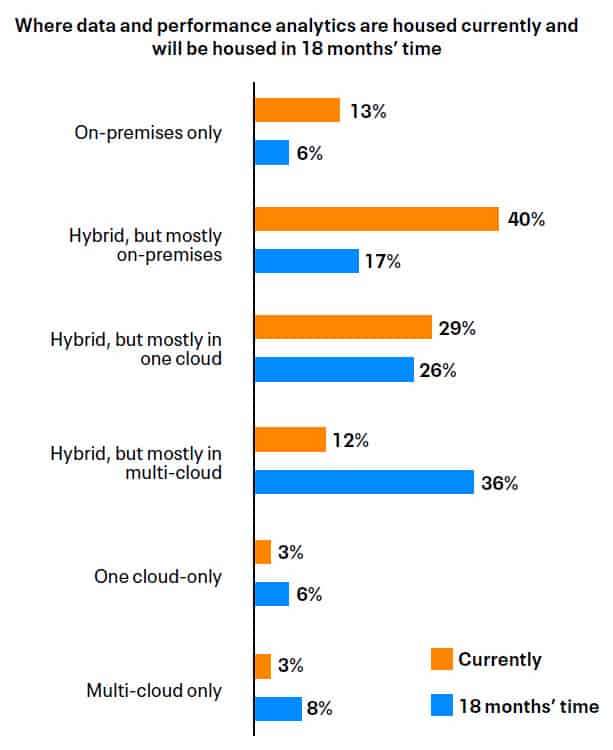A Vanson Bourne research, commissioned by Cloudera, found that organizations with mature enterprise data strategies in place for at least 12 months report higher profit growth at an average of 5.97%.
Among surveyed senior business decision-makers (SDMs), 96% reported that the way data is handled and managed has positively impacted their organizations' performance, while 64% reported stronger levels of resiliency from the presence of a mature data strategy.
Both SDMs and IT decision-makers (ITDMs) share similar views, recognizing data as a strategic business resource, but these groups have differing opinions on operational processes and implementation.
Ram Venkatesh, chief technology officer at Cloudera said that the presence of mature enterprise data strategies, optimized for hybrid and multi-cloud environments, generate better business outcomes.
He added that businesses look to data as an essential asset not only to make sense of the constant change and upheaval of today but also to help prepare for what comes next.
For his part, Mark Micallef, vice president of Asia-Pacific and Japan, Cloudera, said that data is a strategic asset, and the right data strategy will allow enterprises to control costs and minimize risks while achieving competitive differentiation.
However, the report noted that businesses are still struggling to implement effective enterprise data strategies that efficiently manage growing data volumes and costs.
“It is particularly concerning to see this in APAC, given that 95% of senior decision-makers in the region see the value in making sense of all data across hybrid, multi-cloud and on-premises architectures – the highest among regions,” lamented Micallef.
Data lifecycle challenges hinder innovation
Visibility remains a key issue for organizations, with close to nine in ten (89%) reporting secure, centralized governance and compliance over the entire lifecycle as being valuable when handling and managing data.
Only 12% of surveyed ITDMs report that their organization interacts with all stages of the data lifecycle process – something immensely helpful in helping organizations achieve an enterprise data strategy. Without complete control and visibility over every aspect of data, organizations will lack the key capabilities required to drive innovation.
Effective enterprise data strategies remain key
Organizations see the value in enterprise data strategies but struggle to make them effective. Organizations utilizing enterprise data strategies for more than a year reported them to be very effective (63%), along with higher profit growth.
91% of ITDMs whose organizations have an enterprise data strategy in place agree that their current strategy is key to their business resiliency. SDMs surveyed report an average of $384,962 lost annually due to missed opportunities involving data, with the telecommunications industry reporting the highest average annual loss of $6,617,348.
The future is hybrid
The report shows an anticipated shift to hybrid cloud in the next 18 months. With both SDMs and ITDMs reporting that 43.07% of their workforce will continue working remotely in the next year, organizations are investing in infrastructure to support hybrid working environments.

79% of ITDMs’ organizations are looking to house their data and performance analytics on hybrid architectures. Among cloud options, multi-cloud emerged as a clear favourite, with 44% of ITDMs indicating their preference for multi-cloud architectures in 18 months’ time.
With the hybrid data cloud, organizations can access and analyse data fast and with ease to make smarter, data-driven decisions to effectively meet the demands of today’s hyper-competitive business climate.
Accessing and managing data from multiple sources and locations will give organizations the control and flexibility of utilizing a hybrid workforce while still being able to run the business as usual. 92% of SDMs believe that making sense of all data across hybrid, multi-cloud and on-premises architectures is or would be valuable.
This finding mirrors the sentiments of 90% of ITDMs, who report that managing data with at least some cloud capacity is a priority for their organization. Similarly, 89% believe that organizations implementing a hybrid architecture as part of their data strategy will gain a competitive advantage.
Data drives success beyond profits
Utilizing data and analytics can yield more benefits than simply increasing profit margins or gaining a competitive advantage. Most organizations recognize the vital link between Diversity, Equity, and Inclusion (DEI) initiatives and organizational success.
The research found that thoughtful data collection and analytics contribute to the success of DEI initiatives. Nearly all ITDMs (96%) and SDMs (95%) believe that data and analytics are important to ensuring successful and effective DEI initiatives, and 95% of both ITDMs and SDMs agree that DEI initiatives contribute to organizational success.
Organizations with effective enterprise data strategies in place are better able to utilize data and analytics to benchmark and evaluate employee diversity programs. With greater visibility over diversity within organizations, comes better decision-making, greater innovation and higher engagement in the workplace.





